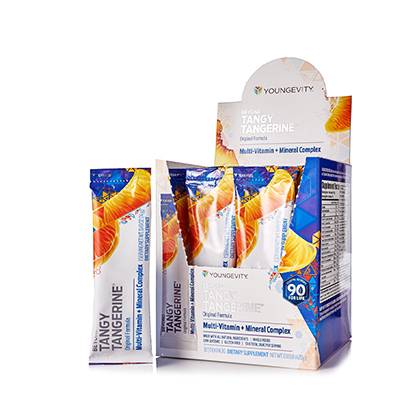Blog Archives
Mushrooms are superfoods
The “Antioxidant Superstar” Chinese People Eat Daily
Dr. Mercola
Mercola.com
2011 November 16
 Steve Farrar has a Masters Degree in Horticulture from the Washington State University and has worked and studied mushrooms professionally for the last 30 years.
Steve Farrar has a Masters Degree in Horticulture from the Washington State University and has worked and studied mushrooms professionally for the last 30 years.
The first 20 years he spent growing them and working primarily with gourmet chefs, but in the past decade, he’s started applying his expertise of mushrooms to health purposes.
According to Farrar, Americans consume about 900 million pounds of mushrooms a year, but 95 percent of that just one species: the common button mushroom and its relatives, the Crimini and the Portabello mushrooms.
In more recent years, mushrooms have received a lot of attention, both in gourmet cooking and in the pharmaceutical industry.
As you will soon learn, mushrooms are a largely untapped resource that can help increase your health and well-being.
The Unique Nutritional Properties of Mushrooms
“Mushrooms are defined as a fungus that forms a fleshy above-ground reproductive structure called the’ mushroom fruit body,'” he explains.
Mushrooms should not be confused with mold and fungi however, which do not form fleshy fruit bodies. To learn more about the details of how mushrooms grow and propagate, please listen to the interview or read through the transcript. The common button mushroom, while not as ‘interesting’ as its more exotic cousins, is an excellent low-calorie food, especially for diabetics. It contains a number of valuable nutrients, including:
- Protein
- Enzymes
- B vitamins (especially niacin)
- Vitamin D2
However, Farrar’s focus has been on growing various gourmet mushroom species, particularly the wood decaying mushroom species, which differ greatly from your average button mushroom in terms of biology, nutrition and medicinal value, as well as in the production and methodology of growing them.
“By virtue of them being primary decomposers, they have some unique nutritional and also health benefits to them,” Farrar explains. “I tended to focus on species like Maitake, Shiitake, Enokitake, oyster mushrooms, brown beech mushrooms; mushrooms that people over the last 20 years were not really that familiar with.”
The wood decaying mushrooms, which are preferred in Asia and parts of Europe, are quite different in terms of flavors and textures. They also tend to have valuable medicinal properties that differ from the button mushroom. And we’ve barely scratched the surface when it comes to understanding the value and importance of mushrooms as we’ve only classified about 10 percent of all available species.
“I’m continually humbled by my ignorance of what’s going on in this incredible complex world of fungi,” Farrar says. “It’s just mind boggling. Even with the well-studied species, nearly every week they’re finding a new bioactive component… Maybe it’s a polysaccharide, maybe it’s an enzyme, a protein, an antioxidant. They are continually finding new things that have profound effects when we consume them as a food or as a dietary supplement.”
This just may be nature’s most perfect food
Just 1 TBSP a Day: An Easy Way to Lower Your Cholesterol, Blood Pressure and…
Dr. Mercola
Mercola.com
2011 July 17
 What if consuming a tablespoon or two per day of a simple food could drastically lower your chances of developing cancer, heart disease or stroke, or of contracting a life-threatening virus such as HIV?
What if consuming a tablespoon or two per day of a simple food could drastically lower your chances of developing cancer, heart disease or stroke, or of contracting a life-threatening virus such as HIV?
Would your interest be piqued?
There is a unique freshwater plant that has been of enormous interest to nutritional scientists over the past decade, and it shows promise for doing all of the above—and then some. It’s one of the most nutrient-packed dynamos of the superfood world.
This simple food is spirulina.
I recently posted a report about the radioprotective effects of spirulina. But its health benefits go far beyond that application. But what exactly is spirulina? You may be surprised!
Spirulina: One of Nature’s Near-Perfect Foods
Spirulina is similar to sea vegetables such as dulse, kelp, nori, Kombu, arame, and wakame. Along with its cousin chlorella (another one of my favorites), spirulina is a member of the “blue-green” family—but this family is actually not truly algae.
Although you will often hear the term “blue-green algae,” spirulina and its kin are actually cyanobacteria. Cyanobacteria are classified as bacteria because their genetic material is not organized in a membrane-bound nucleus. Unlike other bacteria, they have chlorophyll and use the sun as an energy source, in the way plants and algae do.
Spirulina is primarily produced by two species: Arthrospira platensis and Arthrospira maxima.
One of the special traits of spirulina is its rich protein content—it’s 50 to 70 percent protein by weight and contains all of the essential amino acids. Records of the Spanish conquistadors suggest that the Aztecs consumed spirulina as a food source, and the Kanembu people of Central Africa harvested it from what is now called Lake Chad.
Wild spirulina grows in the alkaline lakes of Mexico and on the African continent, although it is commercially grown and harvested all over the world. It reproduces quickly, and because the individual organisms tend to clump together, it’s easy to harvest. Commercial production of spirulina is estimated to reach 220,000 tons by the year 2020. Japan is the largest producer of spirulina, as well as the largest consumer.
